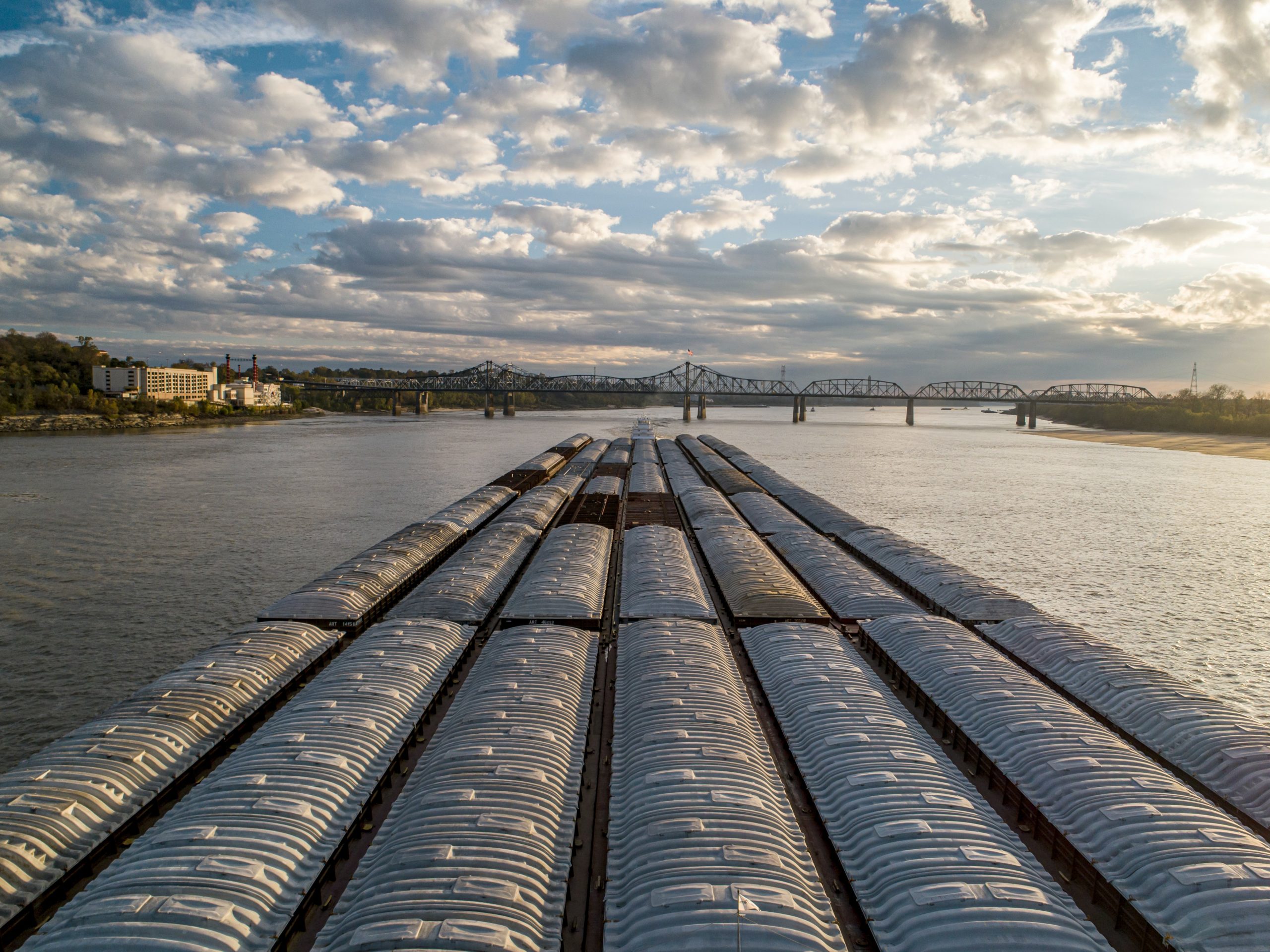In 1705, the first cargo was sent down the Mississippi: 15,000 bear and deer hides floated through what is now Indiana and Ohio, bound for export to France. Today, the river system in the U.S., managed by the Army Corp of Engineers, continues to play a vital role in trade and is a critical component in the U.S. supply chain.
Most of the recent concern for logistics managers has focused on getting high-demand imports of materials and finished goods from Asia into the hands of domestic manufacturers and retailers. However, attention is turning to U.S. exporters struggling to get their products onto the global market. One reason for the struggle is the backup that is building in the inland waterways system that feeds into the Gulf.
The U.S. inland waterways system includes roughly 12,000 miles of commercially navigable channels, moving industrial and agricultural products to and from 38 states. The primary inland waterways system–the upper and lower Mississippi River, Arkansas River, Illinois and Ohio Rivers, Tennessee River, and the Gulf Intracoastal Waterway–moves about half of all tonnage. Coal, petroleum, farm products, and manufactured goods travel from America’s heartland to New Orleans for export. Barges transport more than 22% of domestic petroleum and petroleum products, 20% of the coal used in electricity generation, and 60% of U.S. corn and soybean exports.
Hurricane Ida was a disaster, and some describe the event in scope and impact as worse than Katrina. A shortage of barges developed, and many barges that were already filled with grain were idled. American Barge Line told customers to expect delays well into September as the industry looks to recover from the storm.
On a typical day, hundreds of thousands of tons of grain move along the Mississippi River. According to the USDA, which tracks weekly agricultural commodity movements up and down the river systems, volume has declined to just 84,000 tons.
Furthermore, barge rates are skyrocketing. Similar to other transportation costs – shipping, rail, and trucking – the price to move goods via barge has nearly doubled in the last few months. The USA also tracks one-month forward barge freight rates along the various river systems. Prices have jumped 77% since the first week of April.
The inland waterways provide a cost-effective alternative for container shipping, which is experiencing its own stress at the moment. Container on Barge (”COB”) services are growing and have helped alleviate congestion at the ports. A reduction in volume and and increase in cost will have downstream consequences.
The U.S. supply chain can’t afford another dent. To be sure, the inland waterway system is suffering from an idiosyncratic event rather than systemic issues impacting other parts of the supply chain, such as the shortage of truck drivers. However, the inland waterway system is still vulnerable.
More than 50% of the nearly 250 locks in the system are more than 55 years old and are in desperate need of an upgrade. The Bipartisan Infrastructure Deal passed this summer earmarks $17 billion to upgrade airports, ports, and waterways, so some funds are on the way for improvements.
Keeping the inland waterways functioning at full capacity is not just an economic or supply chain issue; barges are much more environmentally friendly than other modes of transport. One 15-barge tow carries the equivalent product as six locomotives and 216 railcars or 1,050 semis and tractor-trailers. Waterways reduce congestion on the road and rail systems and emit far fewer pollutants. Due to its efficiencies and lower costs, the inland waterways system saves an estimated $7 billion and $9 billion annually over the cost of shipping by other modes.
Besides, there is not an affordable alternative. Railroads are notably absent parallel to the six major waterways. Trucks are a poor substitute because barges can carry more weight at a far lower cost than trucks, especially given that hauling rates have jumped over the last year. The importance of the waterways cannot be ignored.
Hurricane Ida provided logistic managers with another headache. The supply chain is already stressed and can ill-afford another link to break. Delays in the river system will hurt exporters, contribute to more inflation in transportation costs and translate to further congestion at the ports. Relief is desperately needed.








